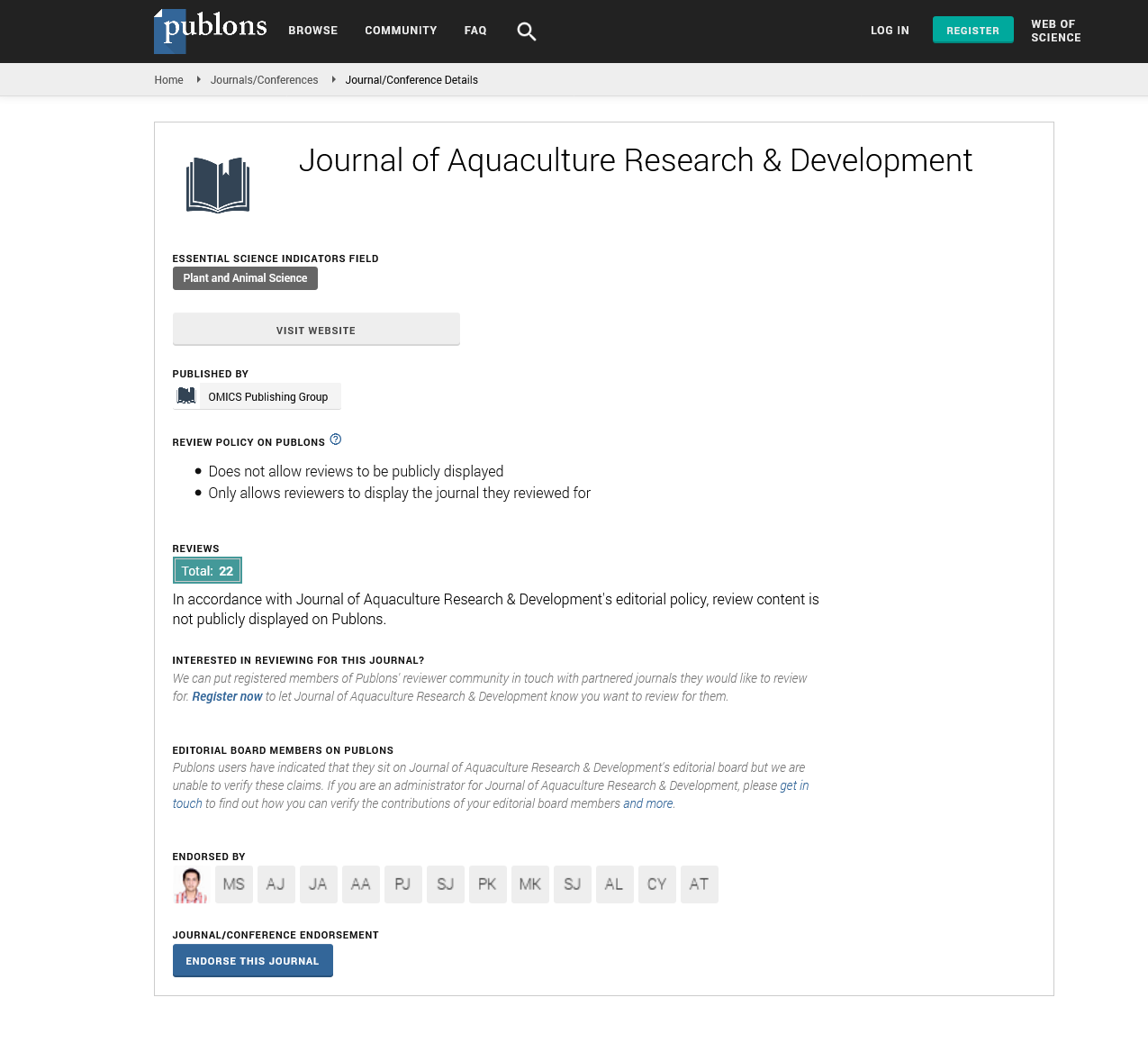Indexed In
- Online Access to Research in the Environment (OARE)
- Open J Gate
- Genamics JournalSeek
- JournalTOCs
- Scimago
- Ulrich's Periodicals Directory
- Access to Global Online Research in Agriculture (AGORA)
- Electronic Journals Library
- Centre for Agriculture and Biosciences International (CABI)
- RefSeek
- Directory of Research Journal Indexing (DRJI)
- Hamdard University
- EBSCO A-Z
- OCLC- WorldCat
- Scholarsteer
- SWB online catalog
- Virtual Library of Biology (vifabio)
- Publons
- MIAR
- University Grants Commission
- Euro Pub
- Google Scholar
Useful Links
Share This Page
Journal Flyer

Open Access Journals
- Agri and Aquaculture
- Biochemistry
- Bioinformatics & Systems Biology
- Business & Management
- Chemistry
- Clinical Sciences
- Engineering
- Food & Nutrition
- General Science
- Genetics & Molecular Biology
- Immunology & Microbiology
- Medical Sciences
- Neuroscience & Psychology
- Nursing & Health Care
- Pharmaceutical Sciences
Commentary - (2025) Volume 16, Issue 3
Molecular and Biological Features of Treated Aquaculture Wastewater
Xudong Zhi*Received: 25-Feb-2025, Manuscript No. JARD-25-29133; Editor assigned: 27-Feb-2025, Pre QC No. JARD-25-29133 (PQ); Reviewed: 13-Mar-2025, QC No. JARD-25-29133; Revised: 20-Mar-2025, Manuscript No. JARD-25-29133 (R); Published: 27-Mar-2025, DOI: 10.35248/2155-9546.25.16.971
Description
Aquaculture systems produce large volumes of nutrient-rich effluent, including Dissolved Organic Matter (DOM) that, if not managed effectively, can disrupt water quality and pose hazards to aquatic ecosystems. Effective wastewater treatment relies on understanding how DOM changes during processing. These transformations affect toxicity, biological potential and molecular composition. Examining toxicity assays, spectral measurements and molecular markers provides a comprehensive view of water quality and treatment performance.
Characteristics of aquaculture DOM
DOM in aquaculture effluent comes from uneaten feed, fecal matter, metabolic exudates and microbial production. It contains a complex mixture of protein-rich compounds, carbohydrates, lipids and microbial byproducts. Fresh DOM is characterized by high levels of labile compounds with biological reactivity, high protein-like fluorescence and low humic content, elevated Biochemical Oxygen Demand (BOD), which reflects microbial breakdown
As DOM moves through treatment, microbial activity, photochemical reactions and adsorption processes cause it to decompose, polymerize, or form recalcitrant residues. Monitoring these changes helps assess the reduction of biological risk.
DOM transformation during treatment
Aquaculture wastewater is commonly treated using sequences that may include.
Sedimentation and solids separation: Removing particulate organic matter before DOM processing.
Biofiltration and constructed wetlands: Promoting microbial and plant-mediated transformations.
Photodegradation and advanced oxidation: Enhancing breakdown of recalcitrant DOM fractions.
Photochemical reactions: Natural or artificial UV exposure alters DOM by breaking bonds, producing smaller acids or promoting cross-linking of aromatic structures. These reactions may reduce bioavailability but can also generate secondary toxic byproducts.
Adsorption and precipitation: DOM with high aromaticity or hydrophobic characteristics may bind to mineral surfaces or organic substrates, removing these compounds from the dissolved phase.
Biological toxicity assessment
Reductions in DOM quantity do not guarantee lower biological risk. Bioassays provide insight into residual toxicity. Microalgal assays use growth inhibition tests with species like Chlorella or Dunaliella. A decrease in inhibitory effect after treatment signals reduced toxicity.
Invertebrate tests, such as those involving Daphnia magna, reveal acute or chronic stress responses. Reduced mortality rates after treatment suggest successful contaminant removal. Fish embryo toxicity tests can detect subtle teratogenic or developmental effects. Surviving embryos without deformities or delayed development suggest biologically safer effluent. Linking spectral changes to biological outcomes helps evaluate the ecological safety of treated water.
Influencing factors and optimization
Several parameters dictate the effectiveness of DOM transformation.
Loading rate: Overloading impairs microbial efficiency and limits oxidation potential.
Retention time: Longer contact time allows deeper molecular transformation, but trade-offs exist with throughput and area usage.
Hydrologic conditions: Wetland systems require steady water flow and balanced redox conditions to support diverse microbial communities.
Temperature: Microbial activity and photochemical degradation rates vary with seasonal temperature changes.
Optimizing operational conditions and reactor design ensures effective DOM removal and detoxification.
Integration with wastewater reuse plans
When treated effluent is destined for reuse such as irrigation or repurposing in processing continued monitoring is essential. While spectral indices and bioassays capture acute changes, long-term cell culture toxicity or soil health assessments may be needed to evaluate repeated exposure effects.
Additionally, maintaining system health may require occasional backwashing, periodic plant harvesting, or bioaugmentation to maintain microbial activity.
Aquaculture wastewater contains dissolved organic matter that can be hazardous to aquatic ecosystems. By applying combined techniques spectral measurements, biological toxicity assays and molecular analysis it is possible to assess how treatment transforms DOM. Well-designed systems reduce both concentration and bioactivity, shifting DOM toward less reactive forms.
Ongoing development of process controls, monitoring strategies and safety benchmarks is essential for ensuring aquaculture sustainability and environmental protection. Advanced insight into DOM dynamics helps maintain water quality, protect biodiversity and support responsible growth in aquaculture worldwide.
Citation: Zhi X (2025). Molecular and Biological Features of Treated Aquaculture Wastewater. J Aquac Res Dev. 16:971.
Copyright: © 2025 Zhi X. This is an open-access article distributed under the terms of the Creative Commons Attribution License, which permits unrestricted use, distribution, and reproduction in any medium, provided the original author and source are credited.

